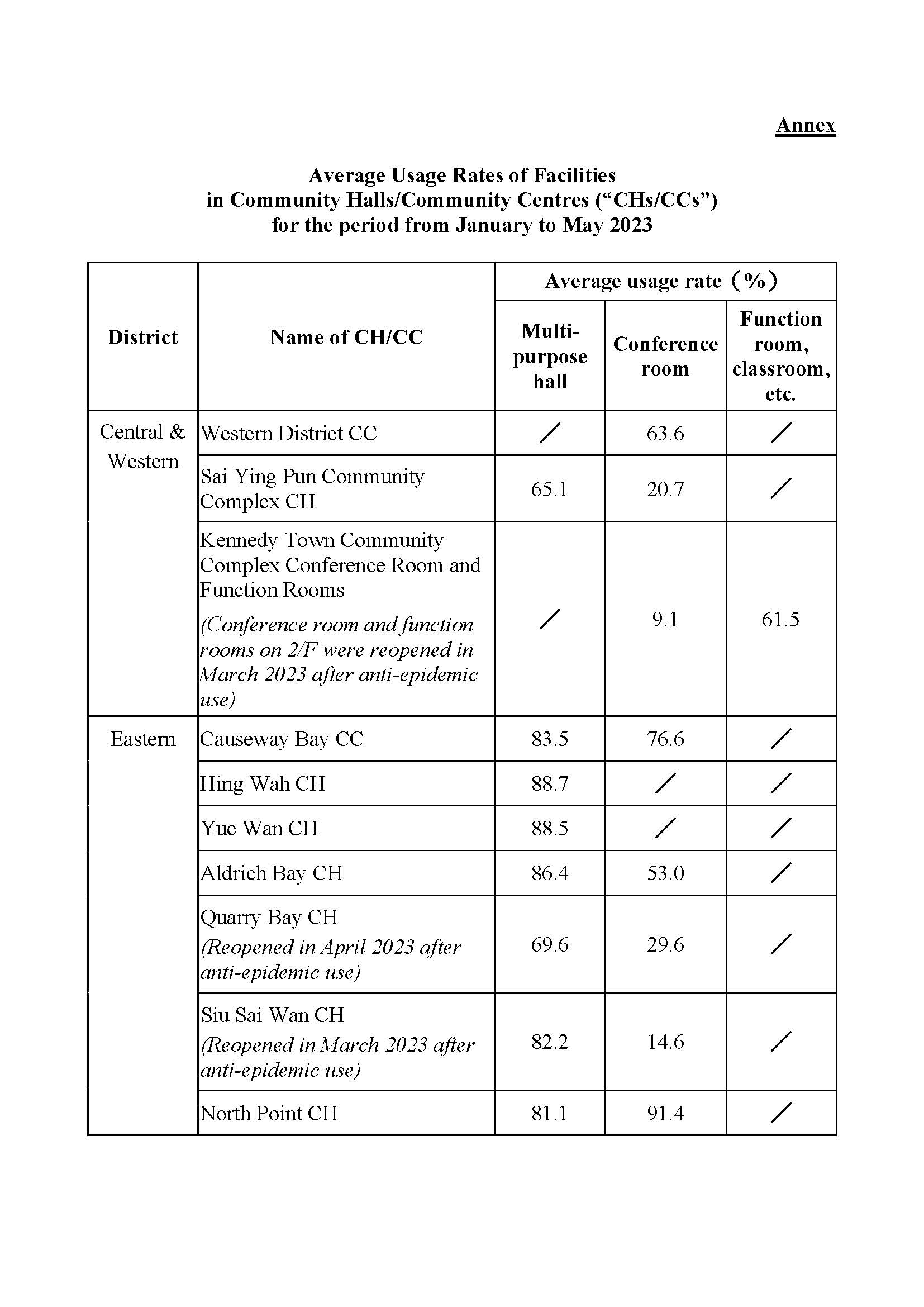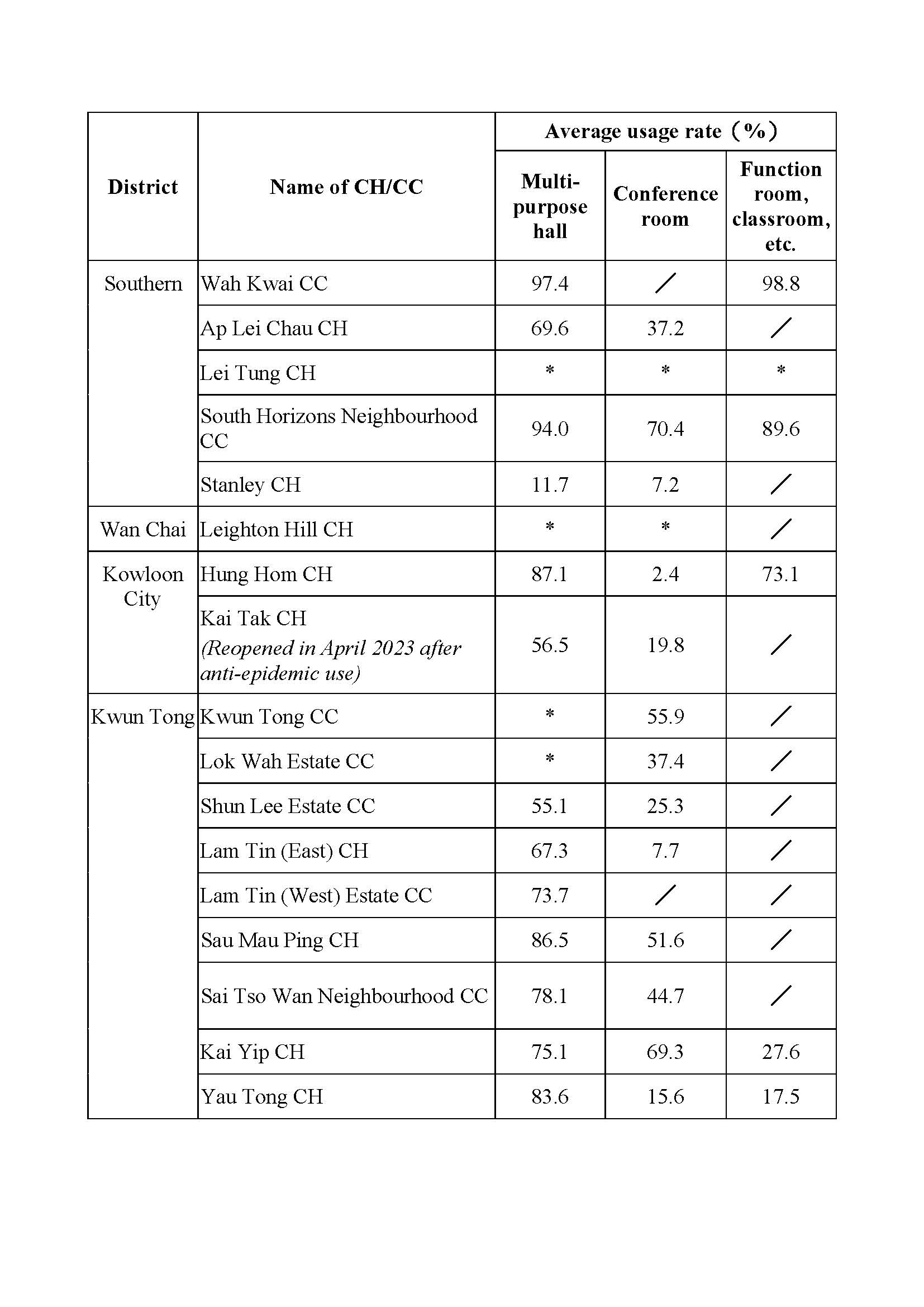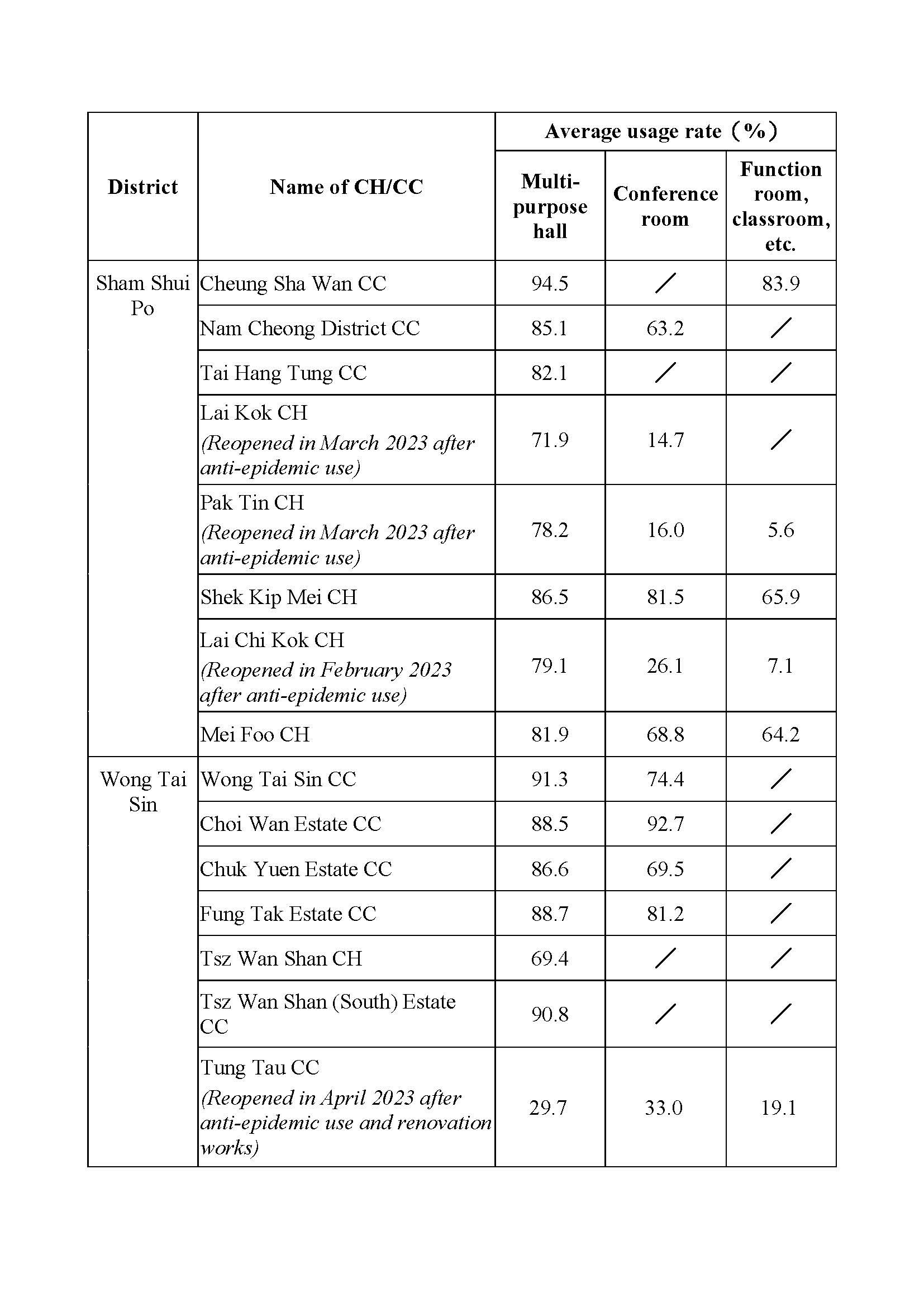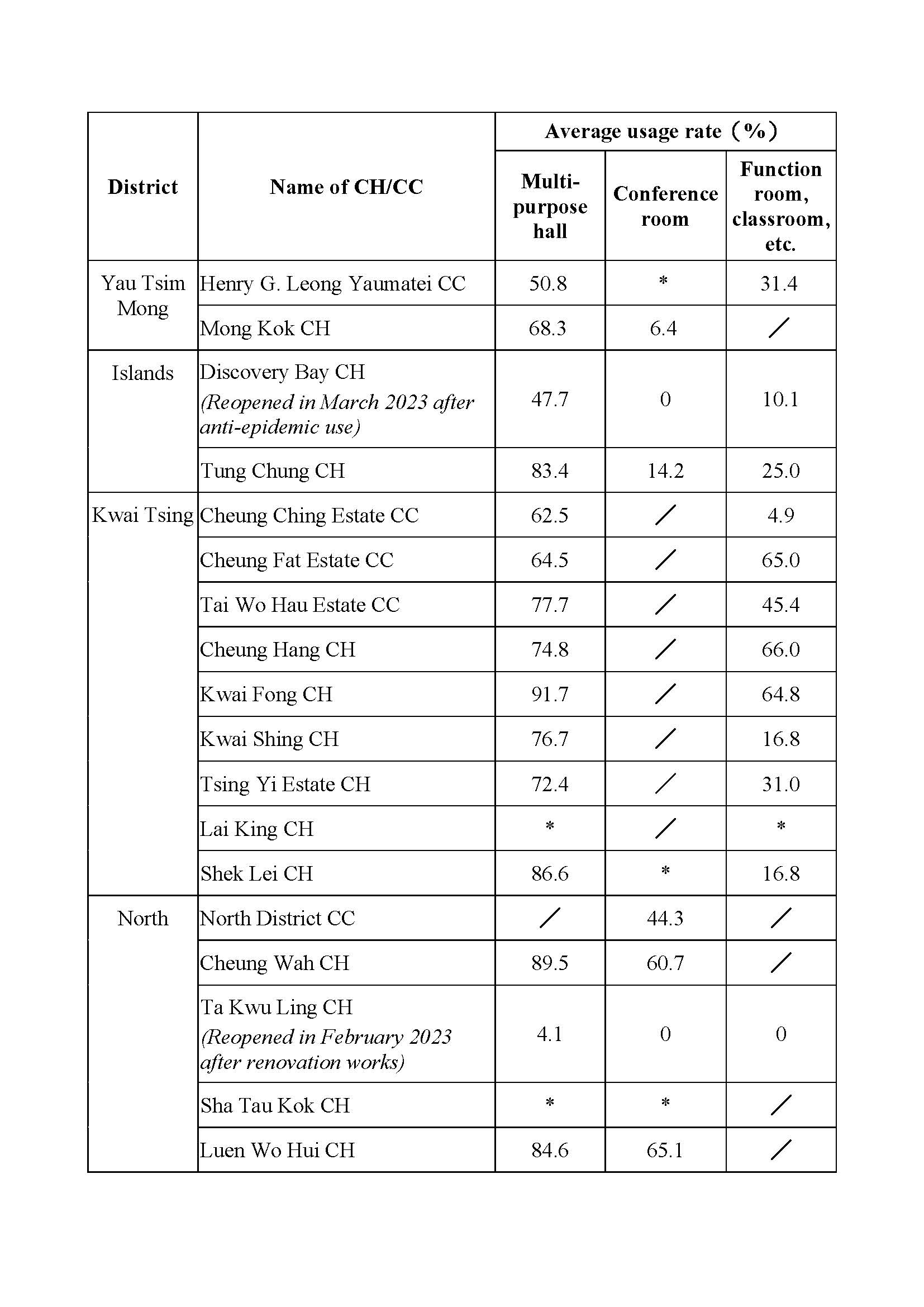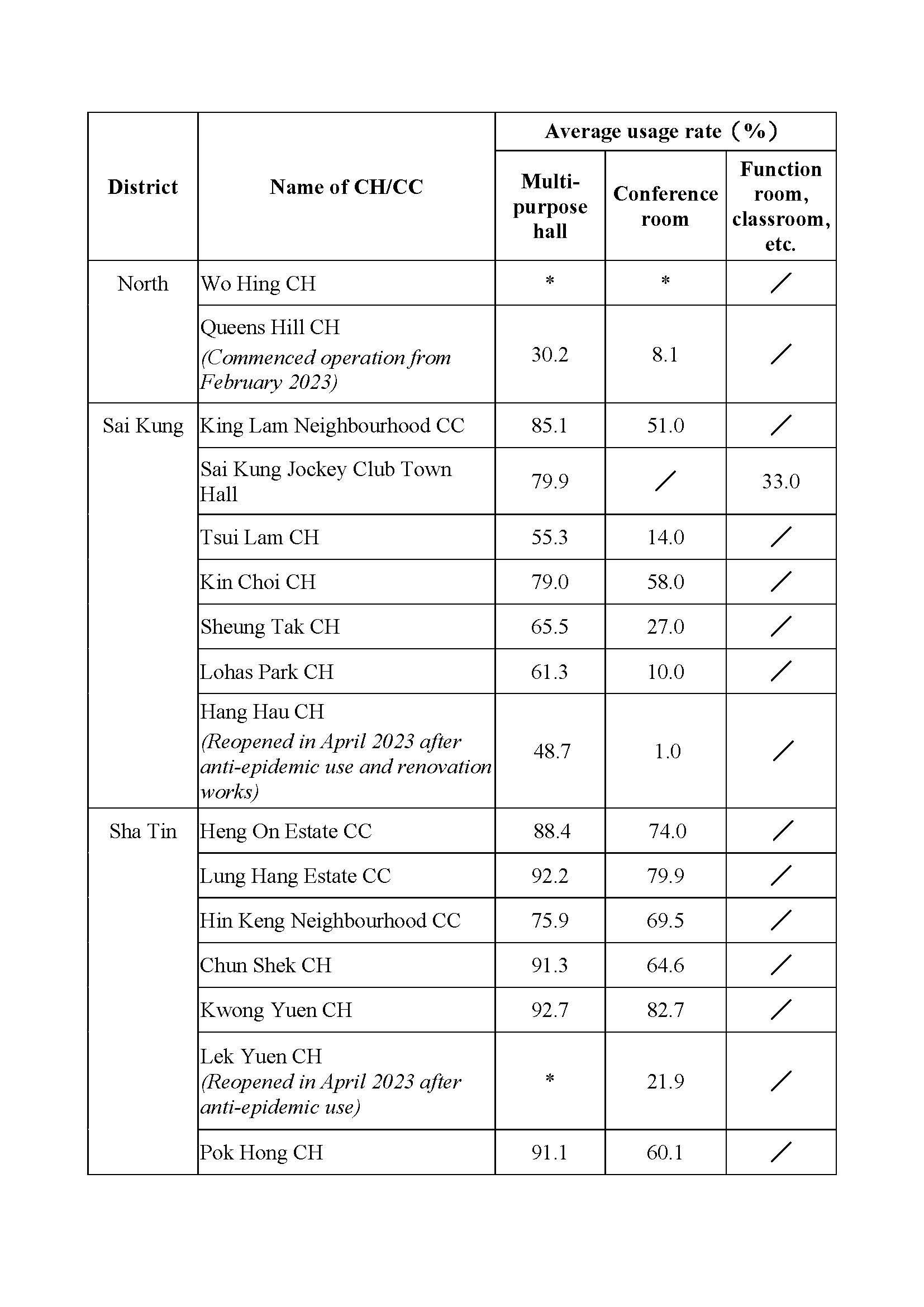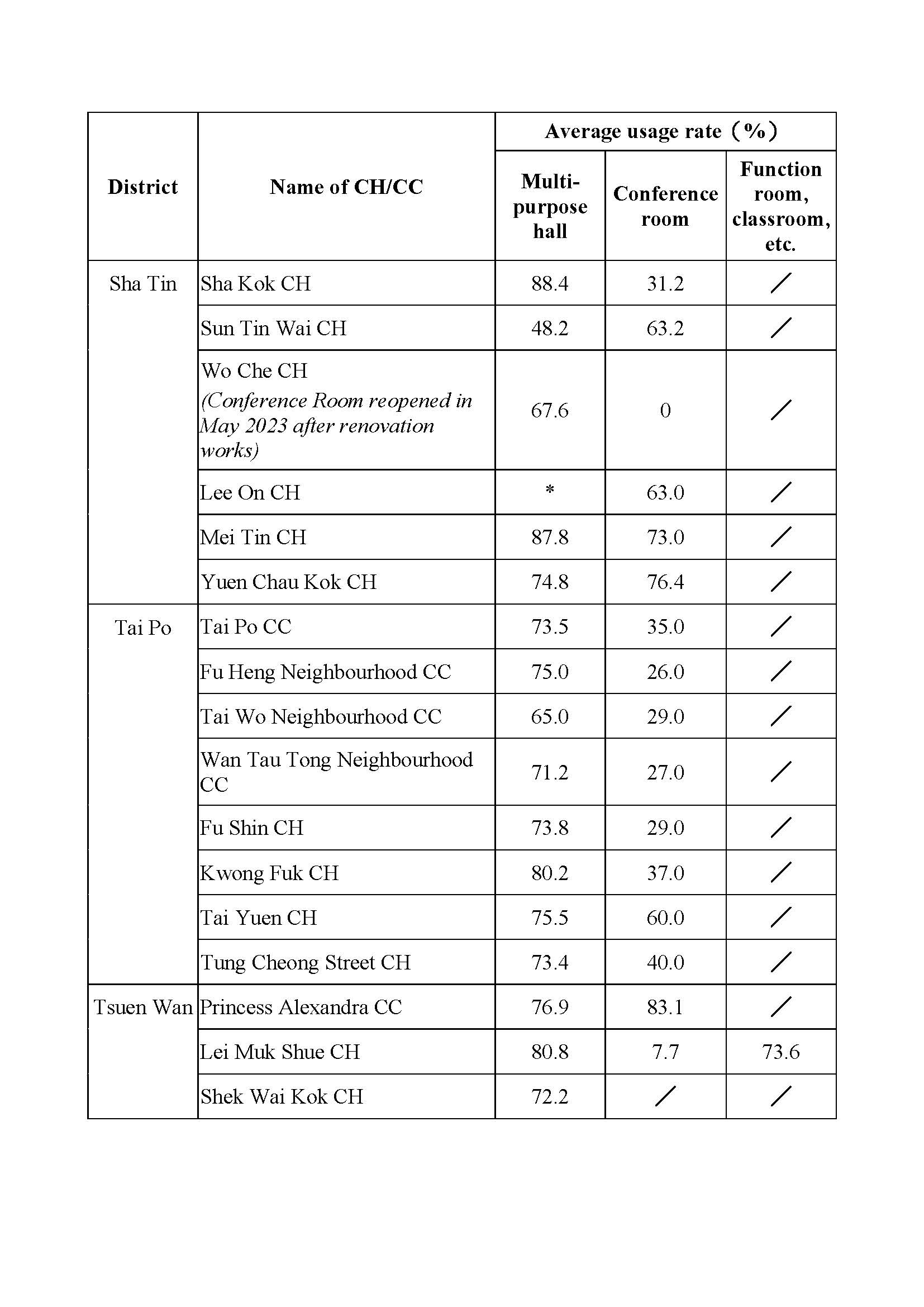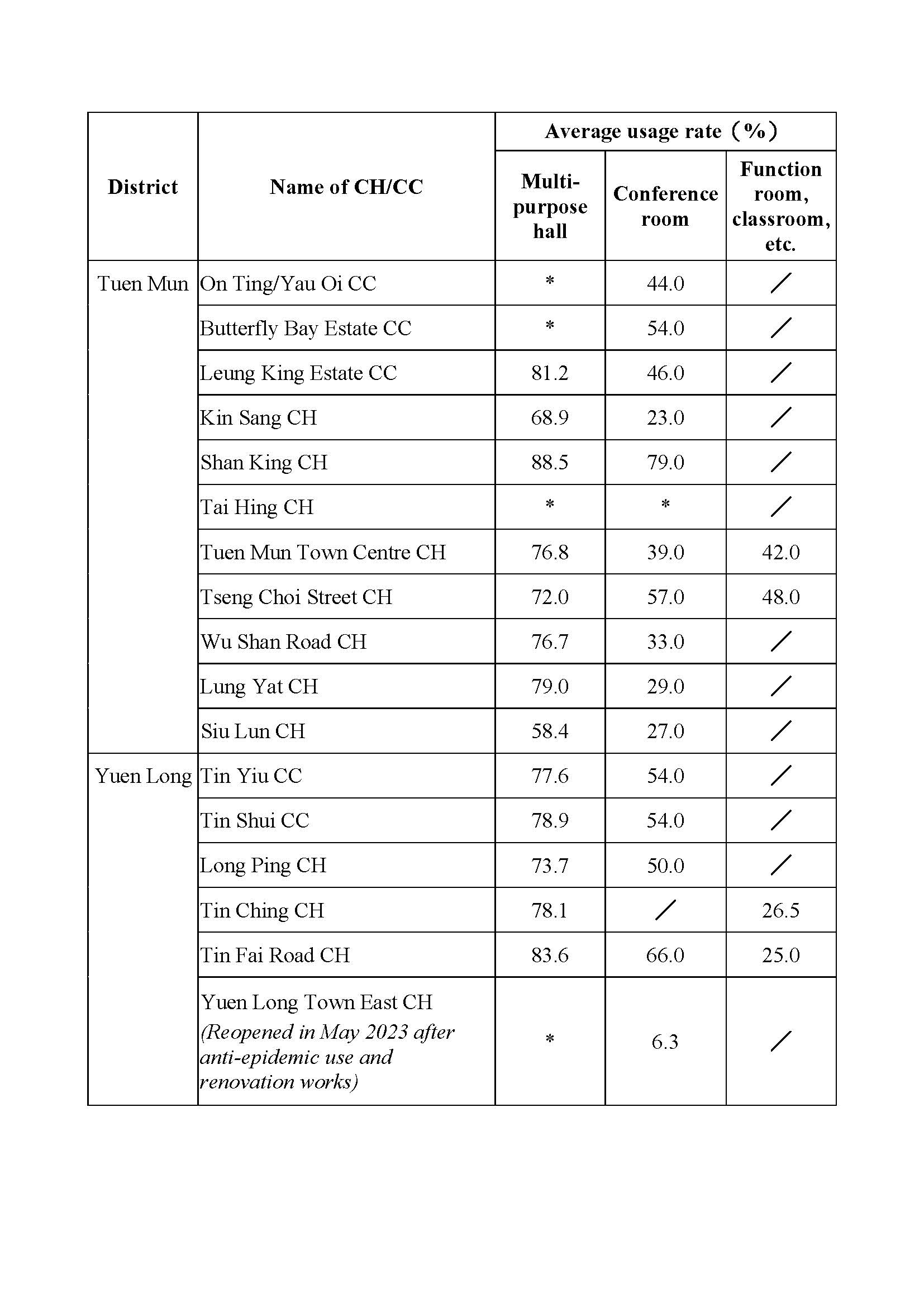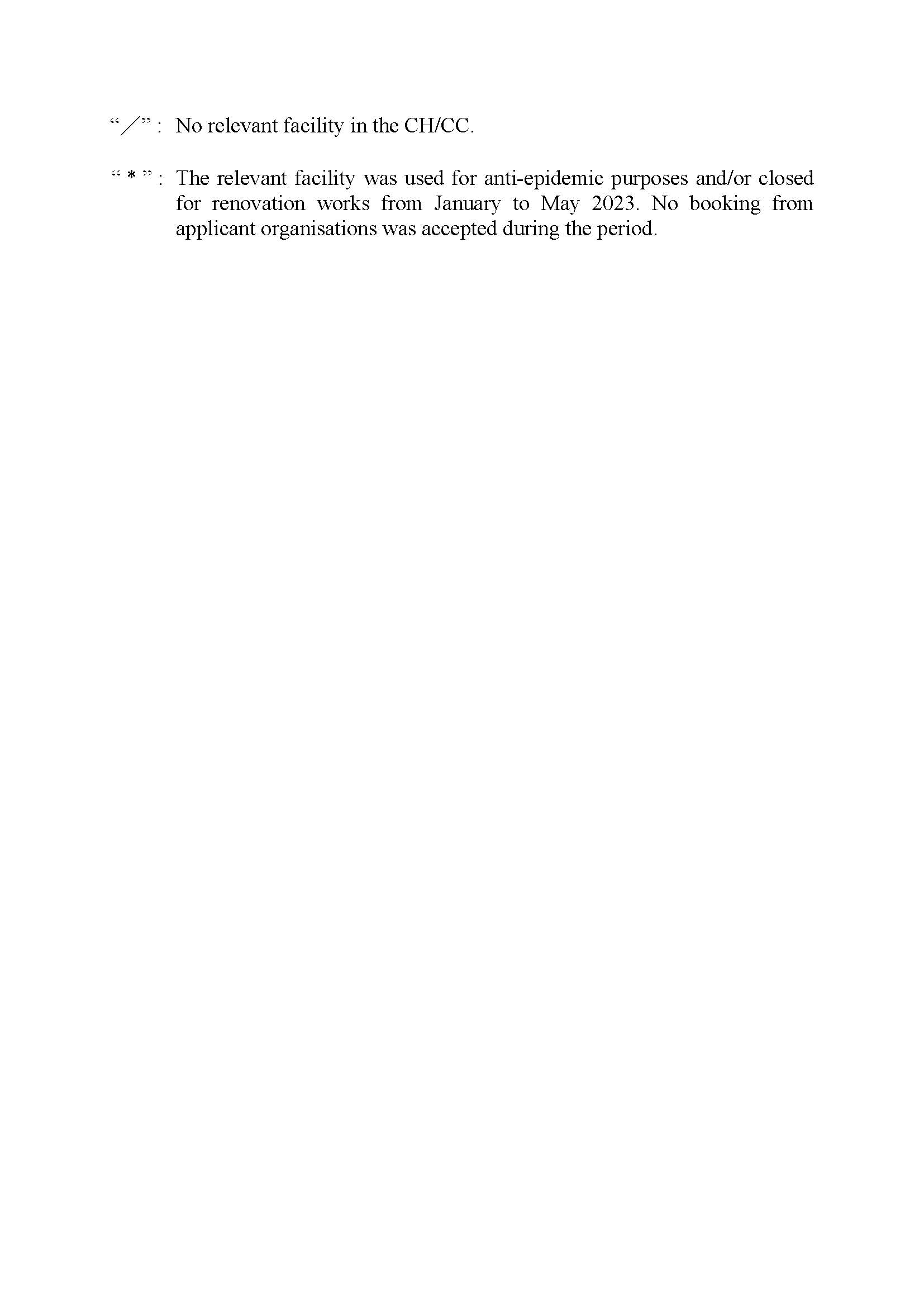LCQ14: Boosting the utilization rates of community halls and community centres
Question by the Hon Chan Chun-ying :
It is learnt that the community testing centres and community testing stations set up in response to the COVID-19 epidemic have ceased operation in batches in recent months, and the relevant community halls and community centres (“CHs/CCs”) have been returned to the Home Affairs Department (“HAD”) and reopened for hiring by local organizations. However, according to HAD’s website, the occupancy rates of some facilities in CHs/CCs have been relatively low. For instance, as at 3 April, less than 3% of the available time slots for booking of some function rooms in the Kennedy Town Community Complex were booked for the whole month of April, while the available time slots for booking of some other function rooms were almost fully booked. In this connection, will the Government inform this Council:
(1)of the monthly utilization rates of various facilities (including halls, function rooms and conference rooms) in CHs/CCs in various districts from January to May this year;
(2)whether it has looked into the reasons for the relatively low utilization rates of some facilities; if so, of the details; if not, the reasons for that; and
(3)whether it has drawn up plans to boost the utilization rates of the under-utilized facilities; if so, of the details; if not, the reasons for that?
Reply by the Secretary for Home and Youth Affairs, Miss Alice Mak:
(1) The average usage rates of multi-purpose halls, conference rooms and other facilities (including function rooms/classrooms, etc.) in community halls/community centres (“CHs/CCs”) of the territory are 76.3%, 42.6% and 44.5% respectively for the first five months in 2023. The average usage rates of these facilities in CHs/CCs (“CH/CC facilities”) in each district from January to May 2023 are at Annex.
(2) The usage rates of CH/CC facilities are related to their respective locations, the activities of district organisations, and availability of similar facilities in the neighbourhood areas. In general, usage rates are higher for CHs/CCs located in more densely populated areas with better accessibility, and lower for those in relatively remote areas. According to experience, as the larger floor area of multi-purpose halls in CHs/CCs renders them suitable for organising a wide range of activities, they are generally more popular among hirers. On the contrary, conference rooms/function rooms/classrooms in CHs/CCs are relatively smaller in size, and can only be used for small meetings or group activities in classes. Their usage rates are hence lower than that of multi-purpose halls in general. The usage rates of CH/CC facilities may also be affected by repair and maintenance works arranged on a need basis.
Regarding the Kennedy Town Community Complex mentioned in the question, there are six function rooms and one conference room available for booking by district organisations. Owing to the deployment of two function rooms and the conference room on 2/F for anti-epidemic use up to the end of March this year and their reopening for hiring by the public at short notice, their usage rates were low at the initial reopening period in April when compared to the function rooms located on the other two floors of the Complex.
(3) To encourage district organisations in making full use of the CH/CC facilities, the Home Affairs Department (“HAD”) has been striving continually to improve the ancillary facilities in CHs/CCs, including replacing the air-conditioning, lighting and other related systems, upgrading the stage and audio-visual equipment, providing automatic drink vending machines, and procuring collective copyright licences of audio-visual works so that venue hirers can use these works free of charge.
In addition, unallocated timeslots of CH/CC facilities after balloting are uploaded onto the HAD website for applications by eligible district organisations on a “first-come-first-served” basis. To maximise the use of CH/CC facilities, District Offices also adopt different measures having regard to local circumstances and needs, such as deploying some unoccupied conference/function rooms as study rooms during the examination seasons.
We will continue to maintain close contact with different stakeholders and explore various other ways to optimise the utilisation of CH/CC facilities for the purpose of serving more people.
